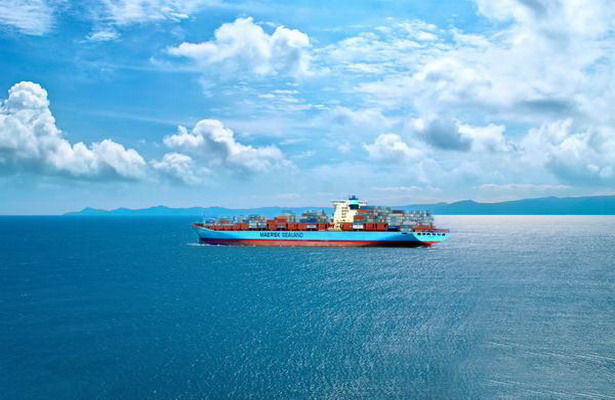Integrate global high-quality logistics and transportation resources to meet more personalized needs of domestic and foreign customers
The model of cross-border e-commerce logistics
In cross-border e-commerce, logistics has always been a top priority, often determining the quality of products and services, and having a significant impact on costs. Today, the editor will talk about what are the cross-border e-commerce logistics models? Let's take a look together.
1、 Postal delivery mode:
The postal network basically covers the world and is wider than any other logistics channel. This is mainly thanks to the Universal Postal Union and the Kahara Postal Organization (KPG). The Universal Postal Union is a specialized agency under the United Nations on international postal affairs, which improves international postal services and develops international cooperation in postal services through conventions and regulations.
Due to its large membership and uneven development of postal systems among member states, the Universal Postal Union finds it difficult to facilitate deep postal cooperation among member states. So in 2002, the postal departments of six countries and regions with relatively developed postal systems (China, the United States, Japan, Australia, South Korea, and Hong Kong) held a Postal CEO Summit in the United States and established the Kahala Postal Organization. Later, Spain and the United Kingdom also joined the organization.
The Kahala organization requires all member states to meet a 98% quality standard for delivery deadlines. If the goods cannot be delivered to the recipient on the specified date, the operator responsible for delivery shall compensate the customer at 100% of the price of the goods. These strict requirements have prompted member states to deepen cooperation and strive to improve service levels.
For example, postal packages sent from China to the United States typically arrive within 15 days. According to incomplete statistics, 70% of packages exported by cross-border e-commerce in China are delivered through the postal system, with China Post accounting for about 50%. Other postal services used by Chinese sellers include Hong Kong Post, Singapore Post, etc.
2、 COD logistics mode:
The COD logistics model, also known as the cash on delivery service model, charges the logistics company for the delivery of goods, which is commonly referred to as "one hand payment and one hand delivery".
At present, COD cross-border e-commerce B2C logistics is popular in the cross-border e-commerce logistics industry, and many enterprises have launched cash on delivery services.
The biggest advantage of the COD logistics model is that it abandons the traditional logistics model's prepayment costs and the risk of bad debts, and reverses the entire cash flow operation process from the traditional model.
The cash flow of the seller's sales revenue and profit is entirely controlled by the freight forwarder. The most attractive aspect for sellers is a large and substantial cash flow, as well as the absence of the risk of bad debts.

3、 Domestic express delivery mode:
Domestic express delivery mainly refers to EMS, SF Express, and "Four Links and One". In terms of cross-border logistics, Shentong Yuantong's layout was relatively early, but it has only recently expanded. For example, Shentong was launched in March 2014. Yuantong also collaborated with CJ Korea Express in April 2014. However, Zhongtong, Huitong, and Yunda have just started cross-border logistics business.
SF Express' international business is more mature. At present, it has opened express delivery services to countries such as the United States, Australia, South Korea, Japan, Singapore, Malaysia, Thailand, Vietnam, etc. Goods sent to Asian countries can usually be used for 2-3 days.
In domestic express delivery, EMS's international business is the most complete. By relying on postal channels, EMS can directly cover over 60 countries worldwide. Compared with the four major express delivery giants, the cost is relatively low. The ability to clear customs in China is very strong. It takes 2-3 days in Asian countries and 5-7 days in Europe and the United States.
4、 International express delivery mode:
Refers to the four major commercial express delivery giants, namely DHL, TNT, FEDEX, and UPS. Through their self built global network, these international express delivery providers leverage their powerful IT systems and localized services worldwide to provide high-quality online product experiences for overseas users.
For example, packages sent to the United States through UPS can arrive within 48 hours. However, high-quality service comes with expensive prices. Generally speaking, Chinese merchants only use international commercial express delivery to provide goods when the customer's timeliness requirements are high.
5、 Overseas warehousing mode:
Overseas warehousing services refer to one-stop control and management services for goods storage, sorting, packaging, and delivery at the seller's destination. Specifically, overseas warehousing should include three parts: head to head transportation, warehouse management, and local distribution.
Head to head transportation: Chinese merchants transport goods to overseas warehouses through sea, air, land, or multimodal transportation.
Warehouse management: Chinese merchants remotely operate overseas warehouse items through logistics information systems and manage inventory in real-time.
Local delivery: The overseas warehouse center delivers the goods to the customer through local postal or express delivery based on the order information.


